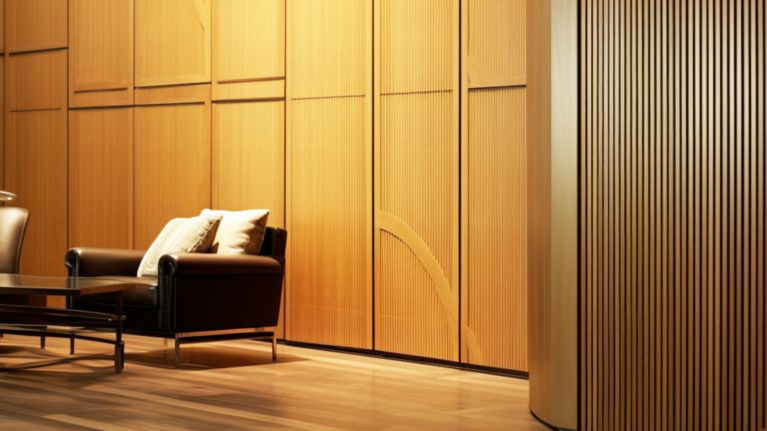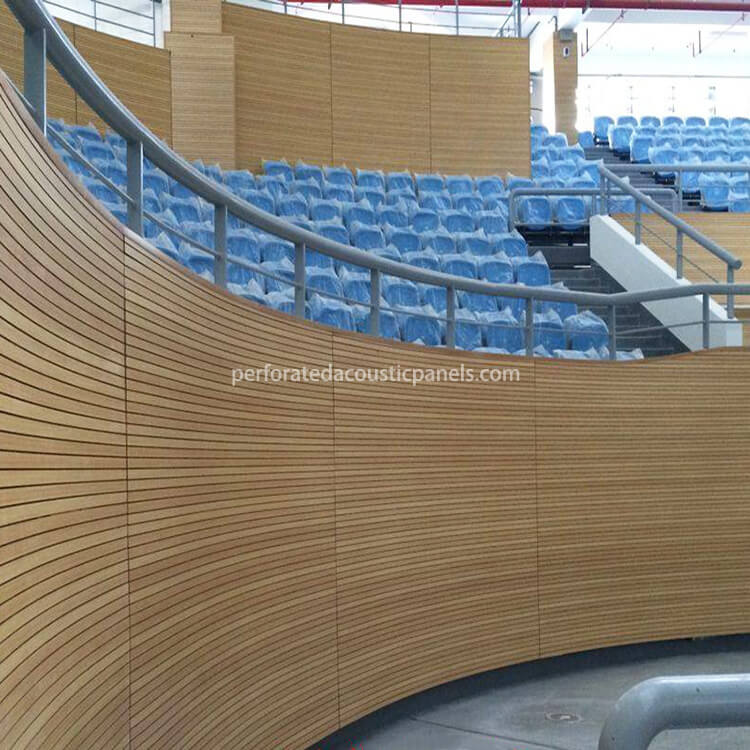I. Introduction
Wood acoustic wall products play a vital role in creating ideal sound environments, specifically by increasing sound absorption and decreasing echos and reverberations in various spaces. In this blog post, we’ll look deeper into this topic by delving into how groove wood panel contributes to creating pleasing environments acoustically.
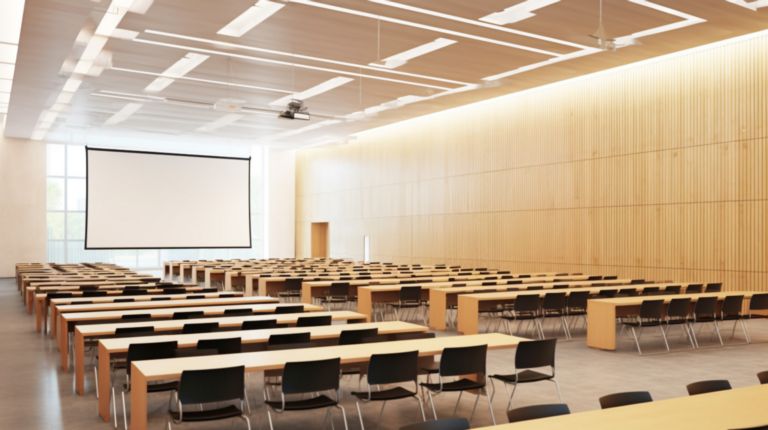
II. Understanding Groove Wood Panels
Groove wood panels (or groove boards or groove paneling) are specialized acoustic panels crafted from wood that feature a distinctive pattern of grooves or channels on their surface, serving two purposes. First, this adds visual interest while improving sound absorption capabilities significantly.
The acoustic groove board is typically utilized in environments requiring noise control, such as recording studios, concert halls, theaters, conference rooms or residential areas where noise reduction is desired. The groove wall may also be installed in spaces like recording studios for noise isolation purposes.
Groove Wood Panels for Sound Absorption
The groove panel board offers multiple advantages when it comes to sound absorption. Here are a few such benefits:
- Enhanced Surface Area: The grooves on wood panels increase their effective surface area for sound absorption, which in turn helps capture and dissipate sound energy, thus reducing unwanted echos or reverberations within the room.
- Diffusion of Sound: The groove pattern on the panels helps diffuse sound waves so they do not reflect back directly into the room and cause echo effects, creating an environment with more balanced and even acoustics.
- Enhanced Low-Frequency Absorption: The groovy board particularly adepts at absorbing low-frequency sounds that can be challenging to manage, acting like resonators that absorb and dissipate low-frequency energy and providing for clearer and more defined sound reproduction.
- Visual Appeal: Acoustic groove paneling walls not only bring soundproofing benefits to any space; they can also enhance its visual aesthetics with their exquisite groove patterns and natural beauty of wood creating an eye-catching atmosphere that adds sophistication.
By including wooden groove ceiling or groove acoustic wood wall panel into an acoustic design, one can achieve significant improvements in sound quality, creating a more pleasurable listening experience and improving comfort levels for listeners.
Stay tuned for next part of this blog post where we will examine in greater depth how wood groove panels absorb sound waves and reveal their exceptional acoustic performance.
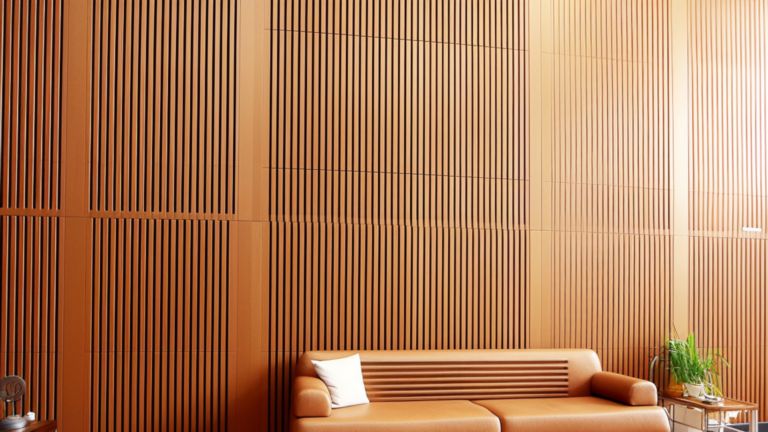
III. Sound Absorption Science
In order to understand sound absorption, it’s crucial to first grasp its concept. Sound is energy that travels in waves; when it meets surfaces it may either reflect off them, transmit through, or absorb into them – sound absorption plays a pivotal role in creating an enjoyable auditory experience in environments.
Sound absorption refers to the process by which certain materials or surfaces convert sound energy directly into heat instead of reflecting it back into the room, in order to reduce echos, reverberations and overall sound intensity, leading to improved clarity and speech intelligibility.
When it comes to wood groove panel, various factors contribute to the outstanding sound-absorbent capabilities. Let’s explore these factors further.
Groove Depth and Width:
The depth and width of grooves on wood panels have a direct effect on their sound absorption properties, providing more surface area for sound waves to interact with and increasing their absorption capacity. Deeper and wider grooves offer more potential sound absorption capabilities for these panels.
Groove Spacing:
Groove spacing plays a critical role in sound absorption. Optimal spacing provides for effective diffusion and scattering, preventing sound waves from reflecting back directly into the room. Therefore, each groove’s spacing must be carefully planned to achieve optimal acoustic performance.
Material Selection:
When it comes to sound absorption characteristics of groove panels made from wood material, your choice of wood species and species density and acoustic properties will have an impactful impact. Furthermore, any surface finishes or treatments applied can further affect sound absorption properties.
Panel Thickness:
Panel thickness should also be carefully considered when making decisions for groove wood panels. Thicker panels generally offer better sound absorption at low frequencies due to increased mass and density; thicker panels also allow for improved dissipation of sound energy more effectively.
By considering these factors carefully, manufacturers can create 4mm groove material with exceptional sound absorption capabilities that creates ideal acoustic environments for various applications.

IV. Design and Construction of Groove Wood Panels
Wooden groove panels come in an assortment of designs and construction methods, providing customizable acoustical properties as well as aesthetic preferences. Some popular examples are tongue and groove profiles such as tongue and groove or square edge profiles.
The groove pattern and spacing on panels can be adjusted to achieve specific sound absorption characteristics. For instance, panels with narrower grooves and closer spacing tend to be better at absorbing higher-frequency sounds, while those featuring wider grooves and wider spacing could offer increased low-frequency absorption capabilities.
Construction-wise, they groovy panel is typically created by milling grooves into solid or engineered wood boards using precise machine milling processes that cut grooves with razor-sharp precision to ensure consistent performance across panels.
In the next part of this blog post, we will delve into the importance of materials and thickness for wall and ceiling groove panels in terms of sound absorption capabilities.
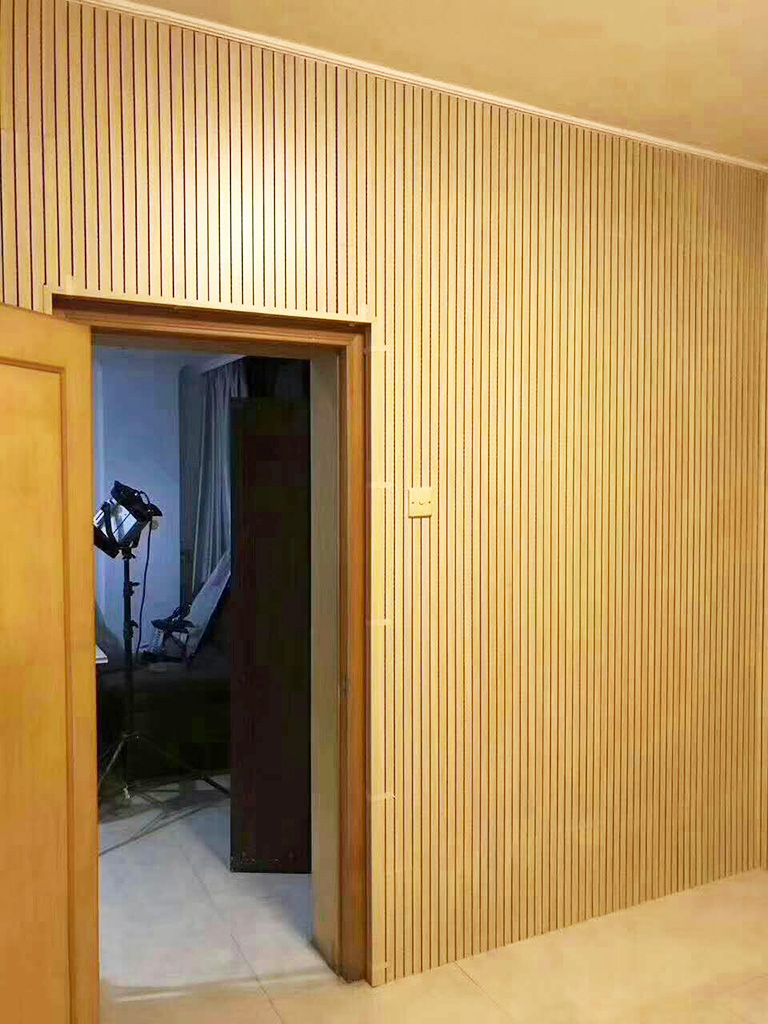
V. Materials and Thickness
Material selection for panel groove in ceiling and wall is key in determining their sound-absorbent capabilities. Different wood species possess differing densities and acoustic properties that will affect how effectively these panels absorb sound waves.
Hardwoods like oak, maple and mahogany are often chosen due to their dense and solid composition. These dense hardwoods possess excellent sound-absorption capabilities that make them suitable for groove wood panels. Pine or cedar softwoods may also be utilized, creating more rustic aesthetics while still offering ample sound absorption qualities.
Not only can the type of wood affect sound absorption performance, but the surface finish or treatment applied can have an impactful impact as well. Certain finishes such as lacquers or varnishes may lessen sound absorption capacity while porous or micro-perforated finishes may enhance it.
Panel thickness is also an integral element in optimizing sound absorption properties. Thicker panels tend to absorb low-frequency sounds better due to increased mass and density; their increased mass dissipates sound energy more effectively for improved acoustic performance. However, it’s essential that thick panels meet both practicality and thickness requirements simultaneously as excessively thick panels may not work for every application.
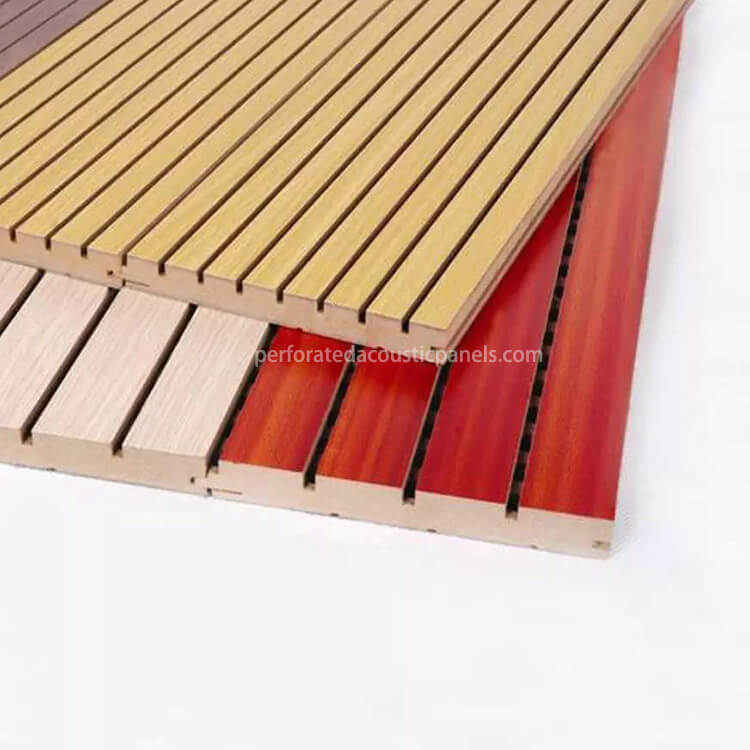
Grooved Acoustic Wood Panels
Grooved Acoustic And Wood Wall Panel Acoustic Panel With Grooves Groove Wooden Slats
VI. Applications of Groove Wood Panels
Grooved wood panels find numerous uses in various settings due to their excellent soundproofing properties and visual appeal, including sound absorption properties that help reduce unwanted noise levels and aesthetic enhancement. A few common examples are:
- Ceilings: Groove ceiling panels can help increase sound absorption and minimize noise reflections, providing an aesthetically pleasing yet acoustically balanced environment in spaces like auditoriums, restaurants or offices.
- Walls: Installing wall groove panel can dramatically enhance a room’s acoustic quality, by absorbing sound waves to reduce echoes and reverberations, providing clearer speech clarity as well as greater sound clarity. These are commonly found in recording studios, home theaters or conference rooms.
- Acoustic Paneling: Groove wood panels can be utilized as part of a larger acoustic paneling system designed to control sound reflections and improve overall audio quality in spaces with specific acoustic requirements. They’re flexible enough to meet varying room sizes and designs if need be.
Groove wood panels provide many advantages in these applications. Not only are they great at sound absorption, but their warmth and natural beauty add warmth and natural charm to a room – while their groove patterns and wood textures create visually pleasing environments, further increasing aesthetics of a space.
In Part Two of this blog post, we will review case studies that illustrate the efficacy of tung and groove wood panels as sound absorbers – providing real world evidence of their acoustic performance.
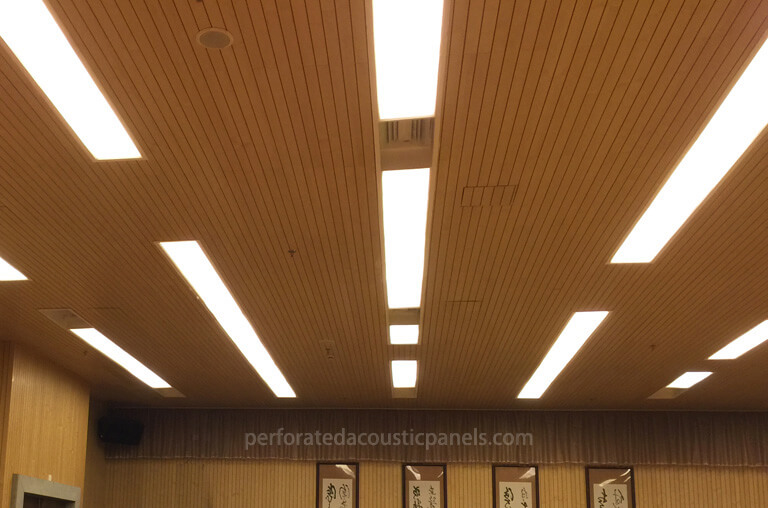
Tongue and Groove Wood Ceiling
Ceiling Tongue And Groove Wood Paneling Wood Tongue Groove Wood Ceiling Panels
VII. Case Studies and Examples
To demonstrate the efficacy of groove wood panels as sound absorbers, let’s explore some real-world examples and case studies:
Acoustic Panels: PAP Acoustics is a leading supplier of acoustic products, offering groove acoustic panels designed with a precision-engineered groove pattern to maximize sound absorption. Case studies have proven that adding these groove acoustic panels into spaces such as conference rooms or educational facilities significantly decreases reverberation time and enhances speech clarity.
Groove Wood Panels in Restaurants: Many restaurants have adopted tung and groove wood paneling to enhance the dining experience for their patrons, such as by reducing noise reflections and creating an intimate setting – these panels help ensure greater comfort and enjoyment when dining at establishments.
These case studies and examples showcase the practical applications and positive results achieved when groove pine boards were implemented into various settings.
VIII. Conclusion
To conclude, groove wood panels provide a scientifically proven solution for sound absorption in acoustic environments. Their unique groove patterns combined with carefully chosen materials and thickness make for impressive sound-absorbency capabilities; helping reduce echos, reverberations, and overall sound intensity by effectively capturing and dissipating energy into sound waves that effectively capture them and disperse.
Groove wood panels‘ versatility enables them to be applied in ceilings, walls, and acoustic paneling systems, not only improving sound quality but also adding elegance and natural beauty to a space.
Acoustics play an essential part in creating pleasant environments, making groove wooden acoustic panel an invaluable asset in recording studios, concert halls, conference rooms and restaurants alike. The use of acoustic wood panelling creates spaces with excellent acoustic properties – ideal for recording sessions as well as concerts!
By understanding the science of sound absorption and harnessing groove wood panels’ potential, we can create optimal acoustic environments that enhance our listening experiences while improving overall comfort.
